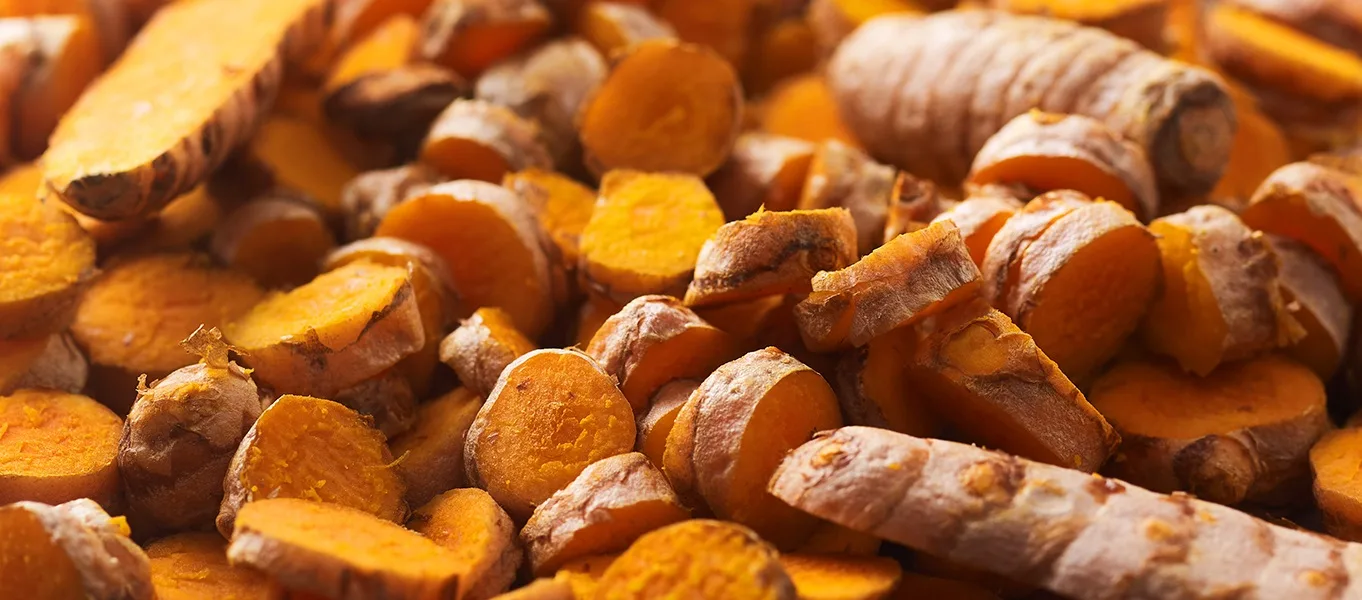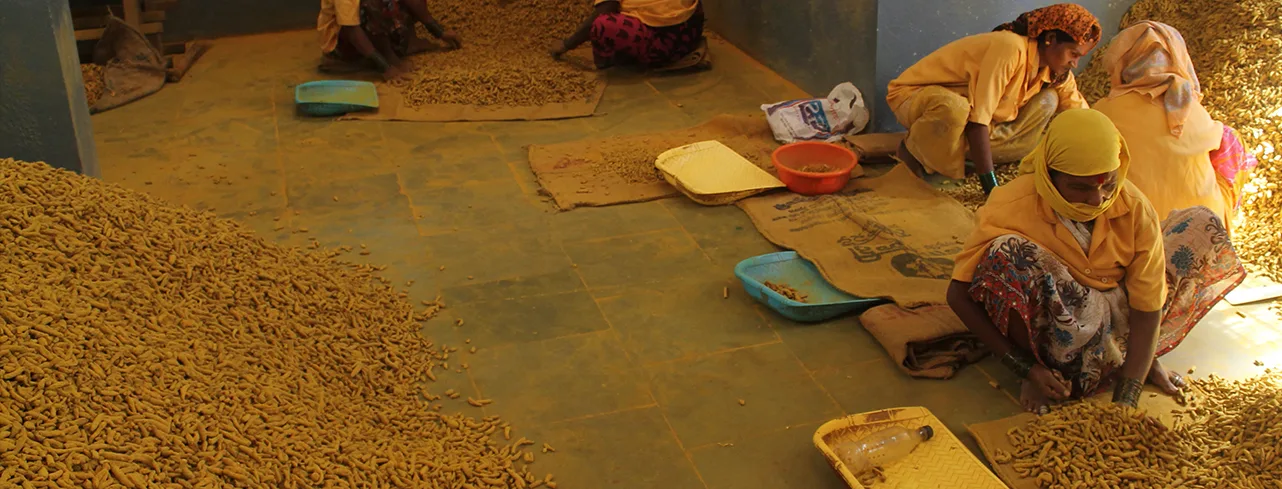Tumeric
The fundamentals
Produces shades:
Latin name: Curcuma longa L.
Pigment: Curcumin
E-number: E-100
6 facts about turmeric
How tumeric is grown
Turmeric is a perennial plant that grows to about one meter (three feet) high. It is usually planted from May to June, which is also the start of the monsoon season in India. It requires temperatures between 20-30°C and abundant water.
The rhizomes or rhizome fractions are planted directly in the soil and have a growth cycle of 9-10 months.
Turmeric harvest calendar and growing areas
Turmeric Curcuma longa L. is harvested from mid-January to mid-April. India is the world’s largest producer.
What you should know about curcumin from turmeric
Oterra's stable, industry-leading formulations allow you to benefit from all of the advantages of turmeric as a natural food color while minimizing any intrinsic challenges associated with this plant.
Curcumin is an oil soluble polyphenol and is available as turmeric oleoresin or turmeric crystals. It can be formulated to be water dispersible and is available as a minimally processed color or a color additive.
Curcumin as a color is an alternative to safflower and carotenoids such as orange carrot and lutein.
Natural Strengths
Good heat stability
Unaffected by pH
Natural Challenges
Poor light stability unless encapsulated
Cloud from encapsulation can be an issue in beverages and confectionery jellies
Products colored with turmeric
Sign up now for updates on what’s happening at Oterra, industry updates and insights, helpful tips, and how to do great things with food colors from nature. And don’t forget to connect with us on LinkedIn.

